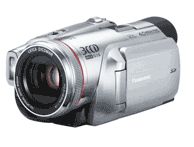Reviews:
Reporter World provides a variety of safety equipment, identification products, specialized high-visibility clothing, pertinent news, product reviews, book reviews and useful links specifically for reporters, writers, assignment editors, news correspondents, journalists, ENG crews, photographers, production staff, directors, segment producers, media security personnel, and freelancers: in short, anyone who is part of the news gathering, information reporting, or documentary film industries.
In this section we review various products and services of relevance to reporters, writers, correspondents, ENG teams and production staff. These products include cameras and accessories; computer hardware and software; scanners; printers; books and other products. Smaller, mini-reviews, are also available in other sections of this site including Products, Books and Movies.
We are constantly adding additional reviews to this section. If you have any suggestions for other products you would like us to review, simply e-mail us using the feedback address on our Terms of Service page. Please supply us with as much information as you can about the product (including name, manufacturer, model number) or book (including title, author, ISBN and publisher).
 Product: Panasonic’s PV-GS500
Product: Panasonic’s PV-GS500
Manufacturer: Panasonic
Relevance: Panasonic’s PV-GS500 is a three CCD camcorder sporting many advanced video features that pros will also appreciate. The lightweight camera is mini-DV based and uses Firewire (IEEE-1394) to download captured clips to a Mac, PC or dedicated edit suite.
Review: The PV-GS500 is a video camera that both consumers and pros can use. Even the most jaded of our product reviewers were impressed by the PV-GS500’s functionality, feature set and ease of use, both on a tripod or as a handheld.
Behind some of this impressive magic is PV-GS500’s special low-light sensitivity, due in large part to the snazzy F1.6 Leica lens and three comparatively large 1/4.7” CCDs. Having three separate CCDs in the camera means the PV-GS500 is able to create demonstrably better pictures because the three primary video colors are picked up by individual sensors. Panasonic says its three new video cameras (the PV-GS180, the PV-GS300 and the PV-GS500) incorporate the same type of 3CCD imaging that it uses in its pro quality cameras, generating up to 540 lines of resolution.
In contrast, the vast majority of consumer-oriented video cameras use a single CCD that must juggle and combine all three colors together. Although we maintain there is nothing visibly wrong with images created with single-color CCD systems, we do note that the photogs who worked on this review resisted going back to the single CCD systems after using the PV-GS500. Frankly, we think you will, too.
Noticeably richer
When compared side-to-side on identical playback monitors, all of our reviewers thought movies created with the PV-GS500’s 3CCD system were noticeably richer than those shot with single CCD models. Even the depth of field seems enhanced on the PV-GS500-created video. Quite impressive.
The PV-GS500 features 4 megapixel still shot recording as well as 12x optical zoom. While not suitable for magazine work and other glossy applications, we thought the still camera’s results were quite impressive nonetheless. We also liked the fact that the PV-GS500 was able to create useable still images -- not just token, low resolution ones that many lesser video cameras make.
No matter what the resolution, we found the resultant snaps were far superior to anything we could generate from any frame-grabbing software we had around the lab. We applaud Panasonic’s use of standard memory cards in the PV-GS500 making it easier to transfer images to other devices such as printers and other cameras.
Other pro features
At the PV-GS500 level, Panasonic has borrowed several features from its pro line of cameras to address the more sophisticated needs of its target market. One of these features is the company’s Optical Image Stabilization (OIS) technology in which camera shake, especially at higher zoom resolutions, is noticeably reduced. Although not much value for tripod uses (as most of our testing is based), OIS is a boon to on-the-go videographers who are shooting with no other external stabilization.
We also enjoyed the PV-GS500’s manual focus ring (that activates when in manual focus mode is engaged) as well as its Pro Cinema mode (30 fps progressive recording) for capturing images with film-like quality. Both sometimes helped get better results in difficult lighting or focusing conditions.
The PV-GS500’s 2.7” 16:9 LCD screen and the camera’s ability to record (and display) in both standard 4:3 format as well as 16:9 widescreen format were hits with our reviewers as well. Although we would have liked to see a higher optical zoom than the supplied 12x resolution, we were satisfied with the camera’s digital zoom, raising the working usable maximum resolution to approximately 40X to 50X (depending on light conditions). Beyond this number, however, images were generally too pixelated to use, even when shooting from a tripod.
We thought the user Interface was well designed and thought out. The mode selection controls were easy to operate, albeit a bit difficult for those with large fingers. The ability to control the camera quickly and easily has obvious benefits for videographers who are shooting in the field and don’t have the option of a second take.
Quick playback
We also note a feature that lets operators preview the last few seconds of recorded tape. This is a particularly nice feature for pros who need to ensure their camera settings are appropriate for the scene. Sure, you can always go into Play mode to review your clip, but the PV-GS500 lets you keep in Record mode but still generate a preview of the last few seconds (saving about 10 seconds of mode-change time). This single feature shows the seriousness that Panasonic is approaching in these higher end cameras.
Zoom controls were easy to use, with all three of the reviewers who contributed to this story independently discovering that the speed of zoom can be easily altered by the pressure applied to the zoom control. We also note that there was very little of that twitchiness that often accompanies many lower end video cameras. Zooms (once practiced) became much smoother than we were used to with small format camcorders.
The supplied remote control wand is a great tool for those who have the luxury of stationary shooting. Although we noticed far less sensitivity of the remote’s zoom controls when compared to the superlative ones on the camera itself, we still used the wand as much as we could during our tests.
Like most camcorder remotes, we noticed that bright daylight situations sometime caused problems with transmitting instructions to the camera. That said, we truly coveted the PV-GS500’s remote, especially shooting at high magnifications where any camera shake tends to be multiplied in the resulting image.
Is the camera perfect?
The answer to this rhetorical question is, of course, that no camera is perfect. There are always engineering tradeoffs made to get where the marketing folks want to position the camera into its target customer base. In the case of the PV-GS500, there are a few changes we’d like to see.
First, Panasonic has removed the capability of converting from VHS to DV video streams in its consumer cameras. This means that while owners can easily playback DV tape onto a consumer-grade TV or monitor or a higher end composite monitor (the PV-GS500’s AV cable nicely consists of three composite lines and one S-Video line), it cannot go the other way. Thus, owners who are trying to digitize older VHS-format tape will be out of luck with the PV-GS500.
In a perfect world, we would like to see this technology placed back into the next revision of the hardware. For professional videographers, the VHS to DV omission isn’t a big deal. All of Panasonic’s higher end broadcast-quality cameras can accomplish this magic. In addition, many third-parties produce conversion tape decks (including Panasonic’s own DV-2500 model). It’s just a shame that consumers who are trying to digitize their old tapes can’t do so with the PV-GS500.
Second, we found that the context sensitive interface could do with a bit of tweaking. Menu options, for example, that were placed two or three items down a list in the record mode, moved to other places in the playback mode. While this is certainly not a big deal, it proved an aggravation to one reviewer who suggested that field videographers might find this annoying. Finally, we would have liked to see an external microphone jack on the camera. These three small nits aside, we were quite impressed with both the camera’s function and its operation.
Overall: We very much liked the PV-GS500 and found it suitable for high end prosumer work. It is packed with features borrowed from Panasonic’s pro line making it a solid camera for a stringer or Web-based reporter. Although not quite up to spec for full broadcasting work, the camera clearly is one of the best (if not the best) we’ve seen for its intended high end consumer market. With its ability to capture images most other handheld video cameras would balk at, the PV-GS500 gets a highly recommended rating.
End of Review
Have your say.
You can give us your feedback by visiting our Terms of Service page.
Buy this printer.
If you wish to buy this printer right now, please click here.
Read other reviews.
If you wish to return to the main Reviews page, please click here.






